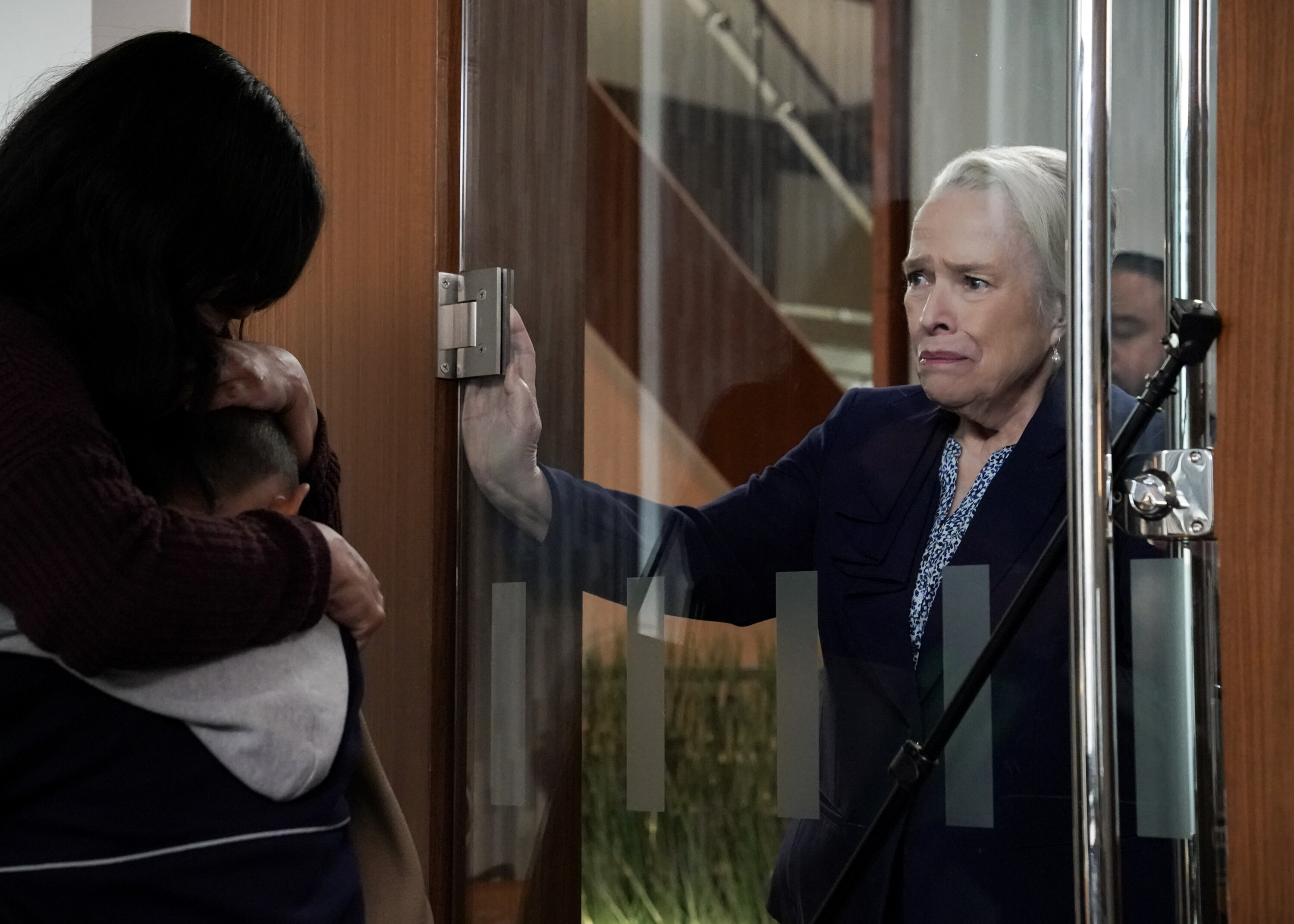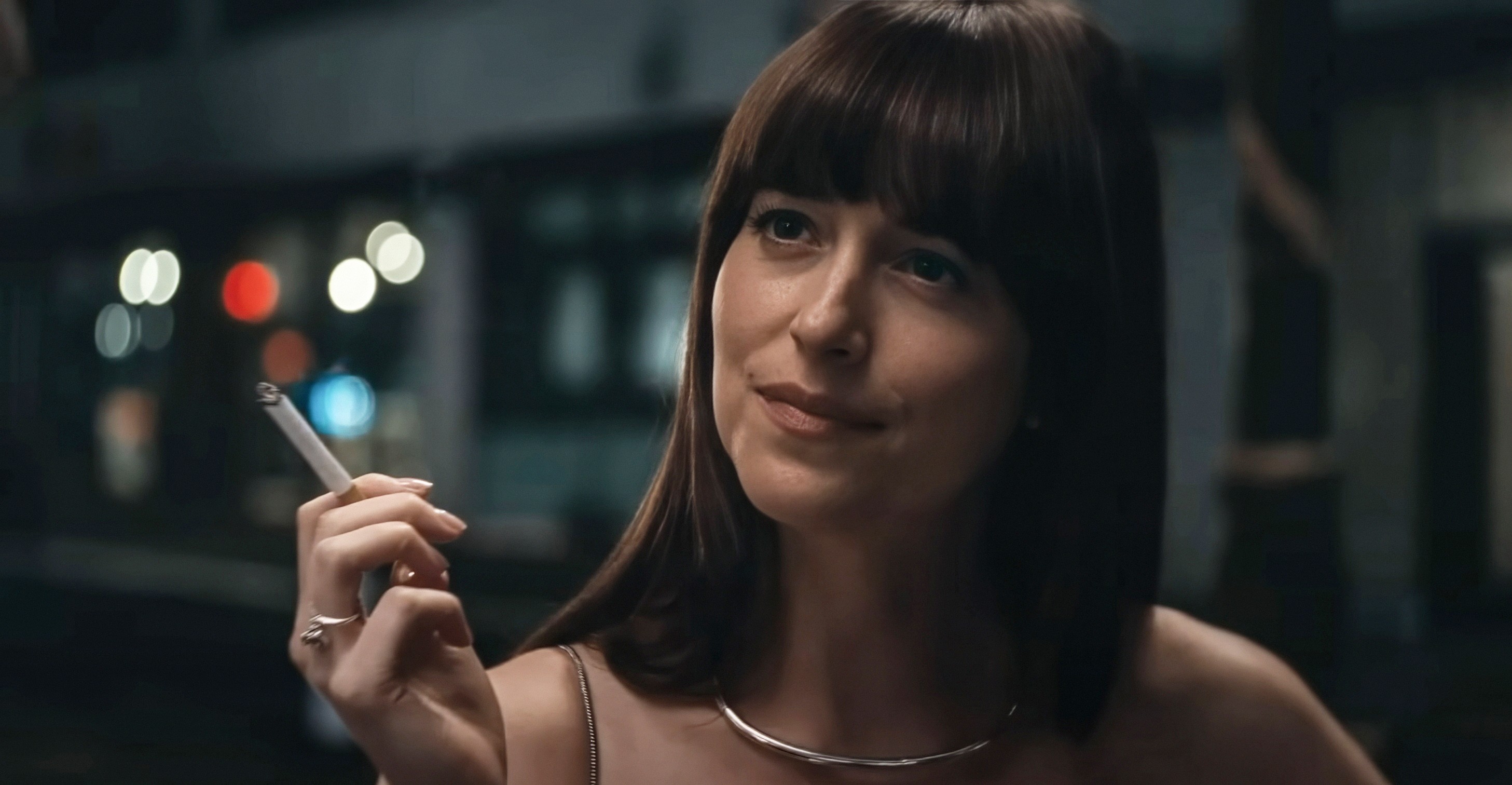There are a lot of pleasures to be found on “Matlock,” the sly CBS update of the old Andy Griffith legal drama that serves as both a reboot of and a commentary on the original series while also going off in completely new directions. As Madeline “Matty” Matlock, Kathy Bates does the finest work of her career thanks to a premise — she’s a wealthy woman working undercover as a struggling widow in a high-priced law firm where she hopes to find and expose the litigator she blames for her daughter’s death — that calls upon her to play every emotional note on the scale and give a multi-layered performance in which she’s constantly lying both to others and, at times, to herself.
The writing on “Matlock” is some of the cleverest and most entertaining on network television, and Bates is supported by an ace ensemble cast. But the show’s secret weapon is its production design, which helps draw the audience into Mattie’s psyche while also creating the sense of scale that the Manhattan set drama requires. For production designer Adam Rowe, that scale was the end result of several years of evolution that began two entire series ago.
Back in 2020, Rowe was the production designer on a medical series called “Good Sam” that only lasted for one season. “We built a sprawling medical campus for a cardiology department,” Rowe told IndieWire. “We had a lot of story to tell, and a lot of characters. I realized, doing that show, that a hospital is like a spaceship, where each room or level is customized to the equipment it’s supporting. So through the course of doing that show, we had a lot of modularization with windows that flipped and walls that changed, and we refined the idea of how to use our one or two stages to be many things for seven or eight storylines.
When “Good Sam” was canceled, Rowe was determined to reuse it for both creative and environmental reasons. “It’s one thing to try and save plastic water bottles on shows, or to print less, but it’s a whole different thing to recycle steel and glass,” he said. Because the set he had built was so production-friendly, with built-in LED lighting, double doors, and ‘hidey-holes” for hair and makeup, Rowe was able to convince the producers of Netflix’s “Glamorous” to repurpose it, turning the hospital of “Good Sam” into the offices of an upscale makeup company.
After “Glamorous” was canceled during the industry strikes, Rowe once again was left with an impressive set that he couldn’t bear to just throw away. “We had several hundreds of thousands of dollars’ worth of glass and steel and flooring and copper,” Rowe said. He coordinated with the producers and the art department to have the set shipped to Los Angeles, where he added to it yet again to create the elaborate law offices at the center of “Matlock.”
Rowe says that without the starting point of “Good Sam” and then “Glamorous,” he never would have been able to build such an intricate and enormous set for “Matlock,” but that “Matlock” benefited from that previous work and built upon it. The scale is important because one of Rowe’s main goals on the series is to convey Mattie’s point of view through his production design.
“From Mattie’s point of view, the city of Manhattan is always growing up and out as the story brings her to different places and different parts of the law,” Rowe said. “All the building blocks we set up for the hospital are still paying off. It’s not just environmentally friendly, but it allows our show to feel as big as it does. If we started from scratch, we wouldn’t have had the budget to build as much.”

One thing that helps Rowe tell the story from Mattie’s perspective is the fact that, like her, he doesn’t always know what’s coming from week to week. “I was just as surprised as the audience when I was reading the scripts,” he said. “It wasn’t like I had some kind of inside track. On most shows, you don’t always know what’s coming.” To that end, Rowe tried to design the sets on “Matlock” to be flexible and adaptable no matter where the story went.
“When I was working on ‘Mad Men’ with Dan Bishop, he said that metaphorically you always need a back door,” Rowe said. “That’s why there are so many doors on ‘Matlock,’ because we never know where the story’s going to go. I might need a closet, or I might need a bathroom. Sometimes on the show, we’re only allowed to see something like horses with blinders on, then at the end of the episode the blinders move and we see a little more. The scenery has to be adaptable to those writing tricks, and we don’t always know what they are.”
The fluid nature of the sets on “Matlock” is part of the fun, and die-hard fans of the show have taken to Reddit and other platforms to dissect the contradictions in continuity that often occur — and which Rowe says are entirely intentional. “Some shows are really strict with continuity, but we really look at every episode individually,” Rowe said. “As long as we’re not disrupting the audience or dislodging their brains, we follow the story. We’ve taken labels off the set and removed names from the doors, and we don’t tell the audience which floor we’re on. The audience can’t quite figure it out, and it amplifies the intrigue.”

One of the most impressive aspects of Rowe’s work — aside from the fact that over the course of the show’s first season he has managed to design well over a dozen separate courtrooms, none of which are the same and all of which serve the drama in each particular episode — is that “Matlock” feels quintessentially New York…yet shoots in Los Angeles.
“Shooting Los Angeles for New York is tough,” Rowe said. “Our streets are wider, we have different trees, New York is older. Los Angeles does not have the scale. But our location department does a great job of finding little corners and pockets that work.” Rowe felt that the ultimate validation came when paparazzi photos of Kathy Bates on location started making their way around the internet. “The photos said they were of Kathy Bates in downtown New York, and it made me laugh because those photographs were taken here in L.A.,” Rowe said.
Ultimately, Rowe feels that doubling L.A. for New York is less of a problem than it might be because the series is so linked to Mattie’s subjective experience. “New York takes a back seat to what’s happening in her life, and that’s not a concession to shooting in L.A., I think it’s the way the story operates,” Rowe said. “New York is not as much of a presence as the law firm.” That said, Rowe said that he often tries to reinforce the idea that the law firm exists in Manhattan by expanding the scope whenever possible.
Rowe also says that one of the benefits of working on “Matlock” is that it’s a character-driven show anchored by an actor who is genuinely a pleasure to work with. “I know that a lot of people have passion for Kathy Bates and have loved her for a long time,” Rowe said. “I just want people to know that she’s as wonderful as you possibly could imagine, because you hear celebrity stories…then there’s Kathy Bates. For all the people who wonder, ‘Is she as awesome as she is on camera?’ — the answer is yes.”



